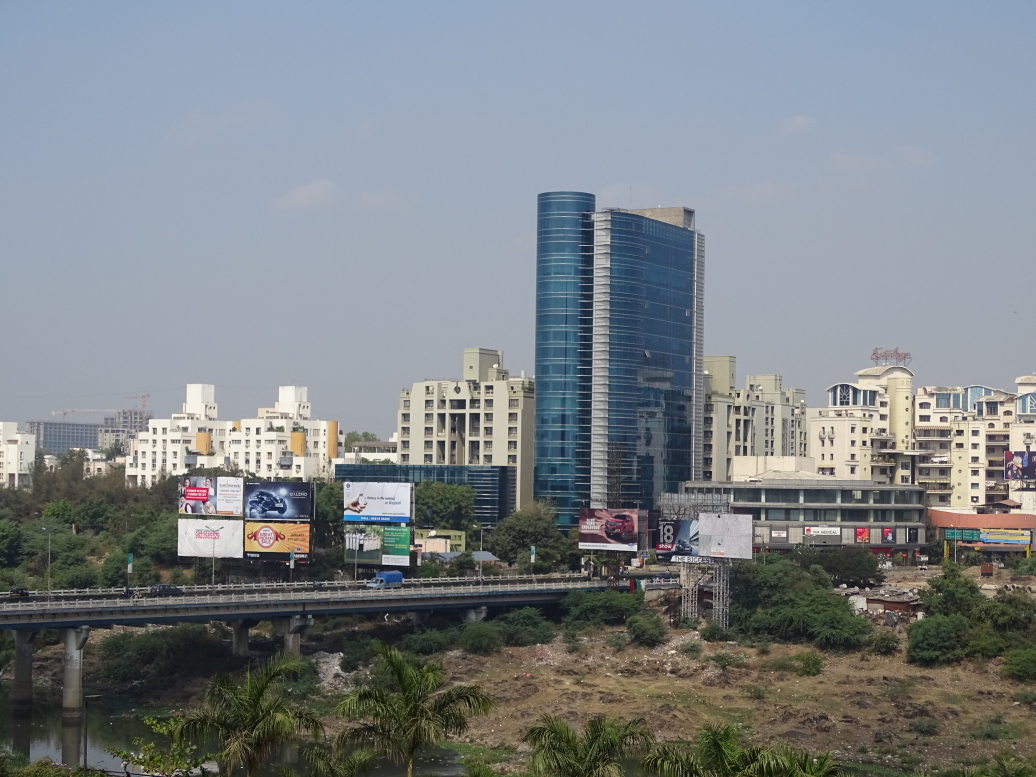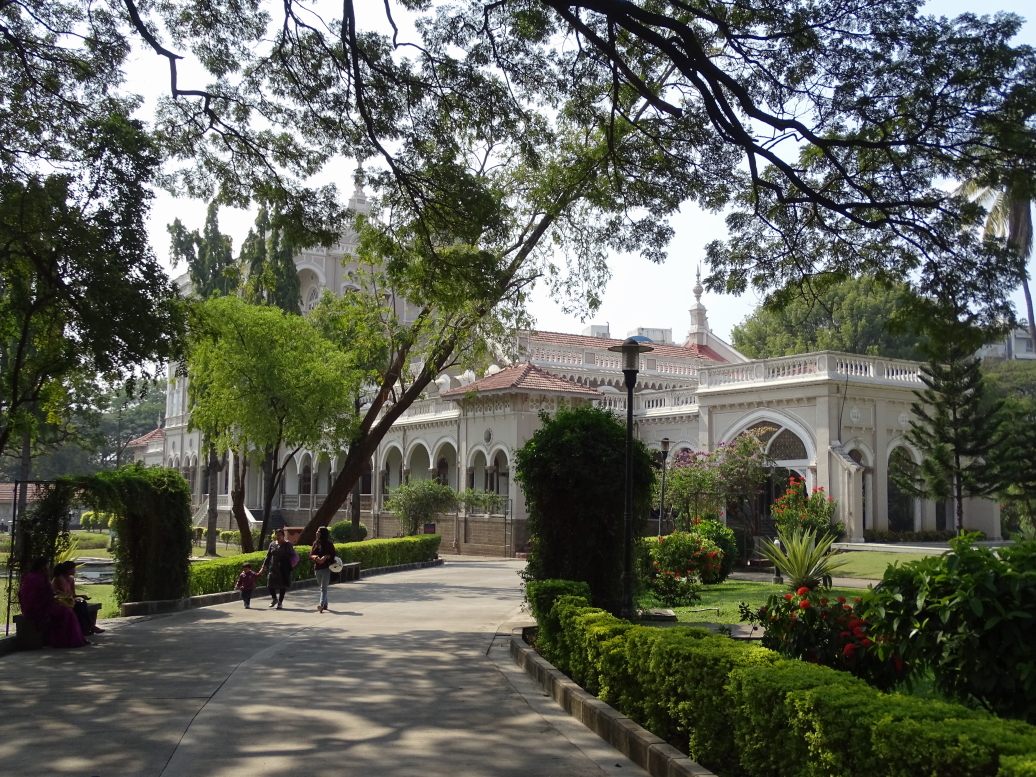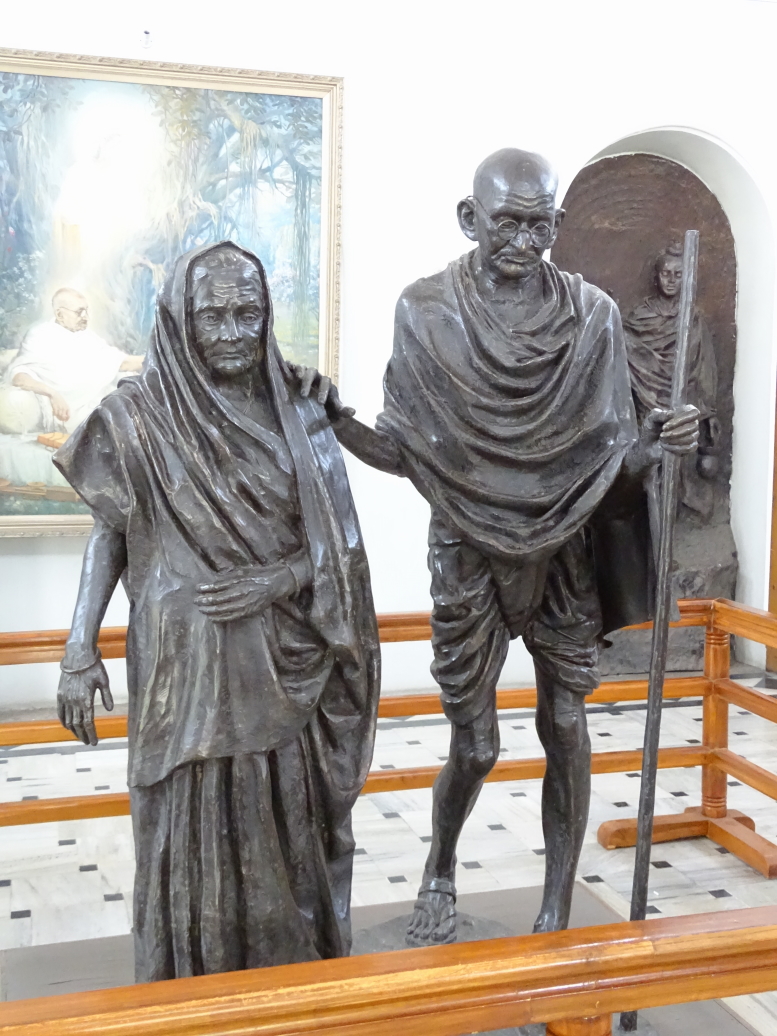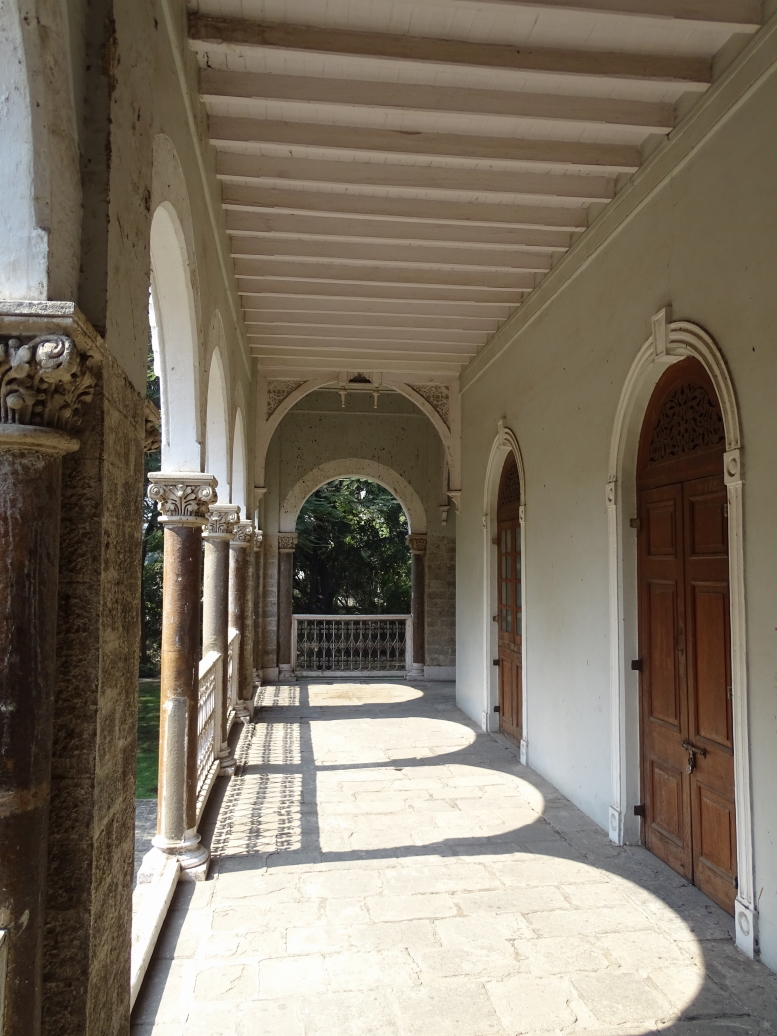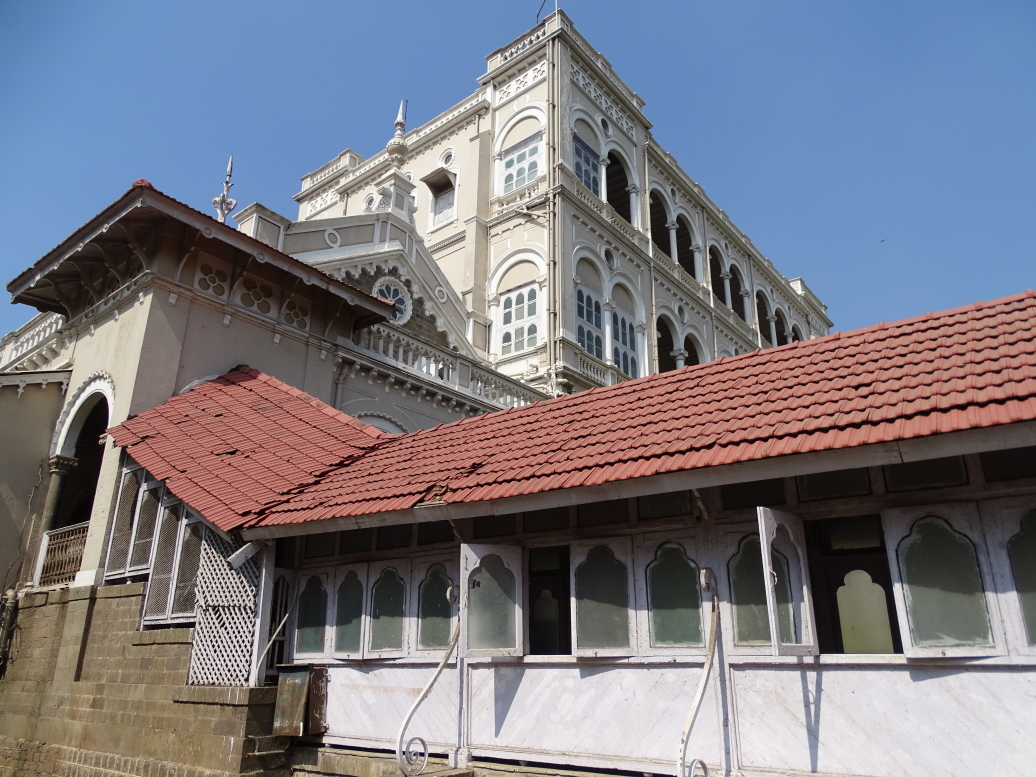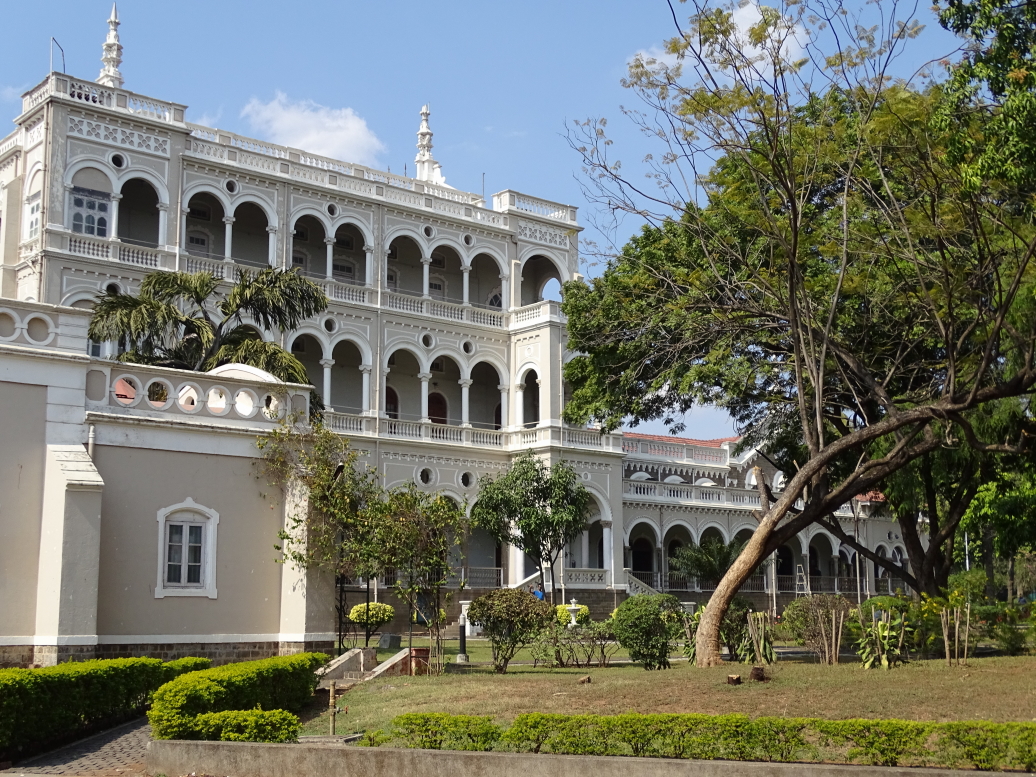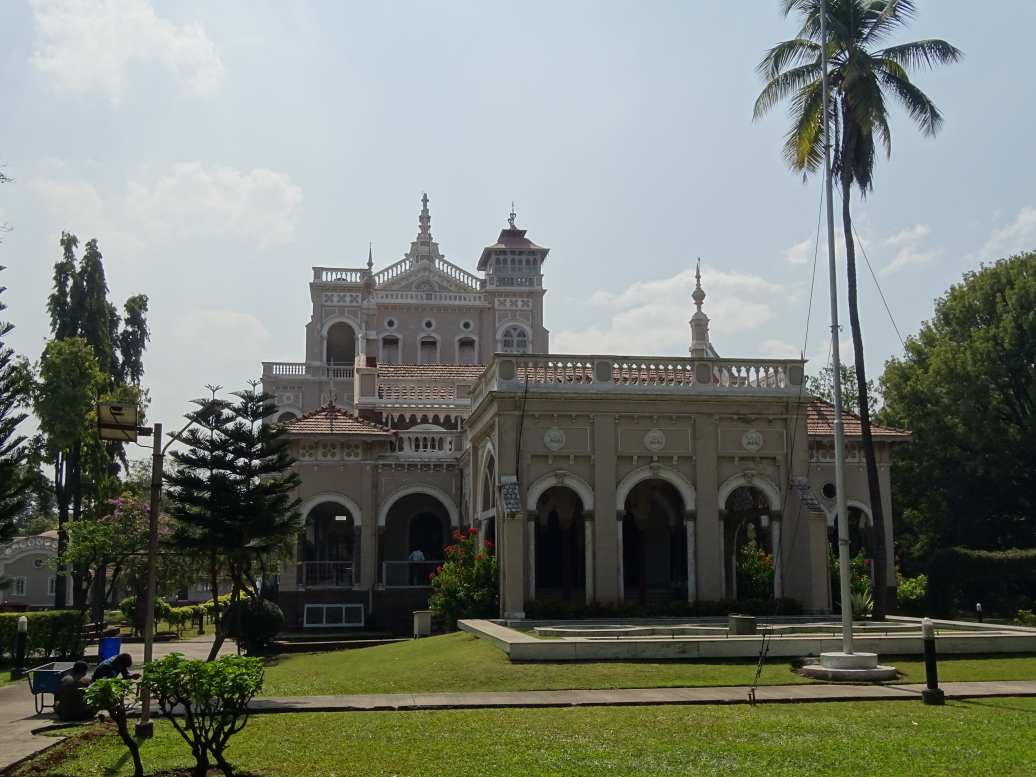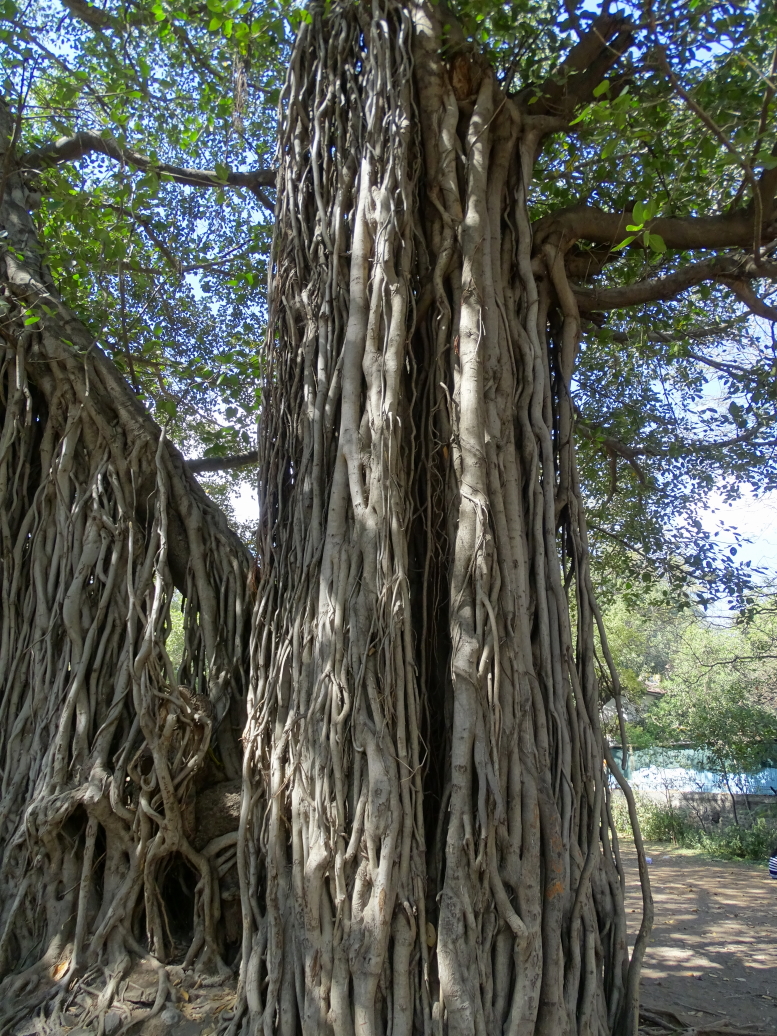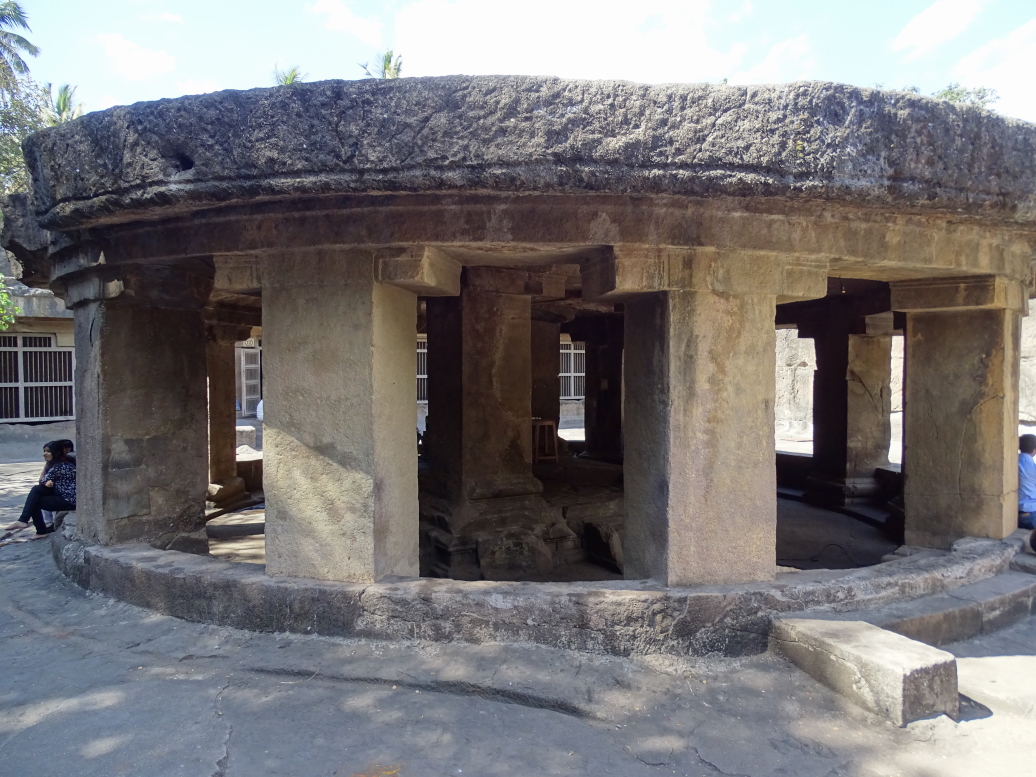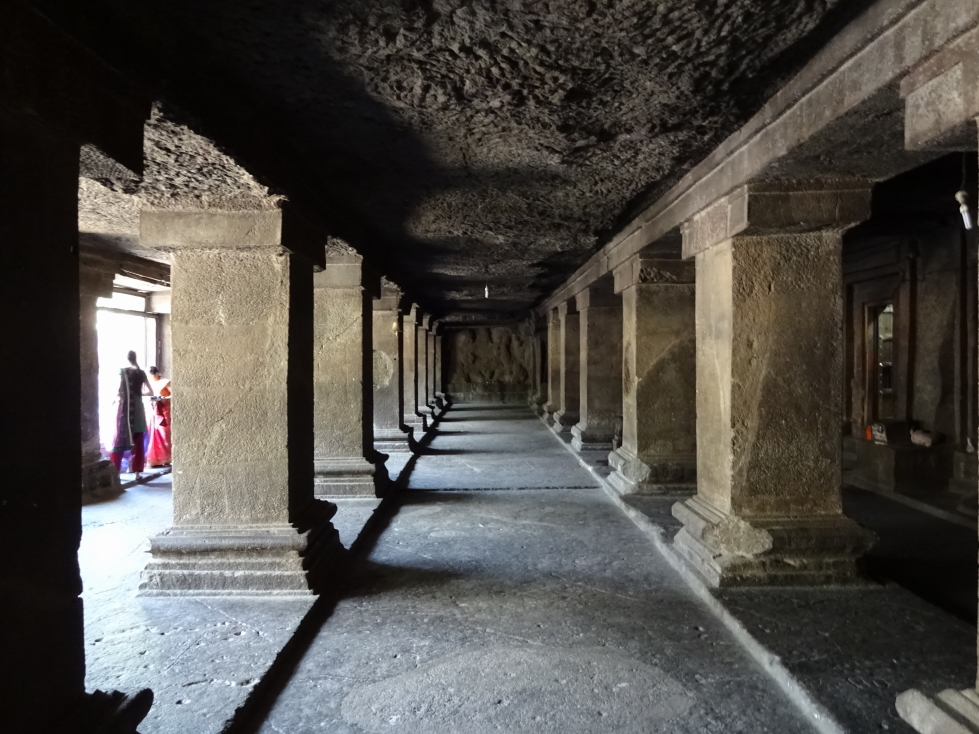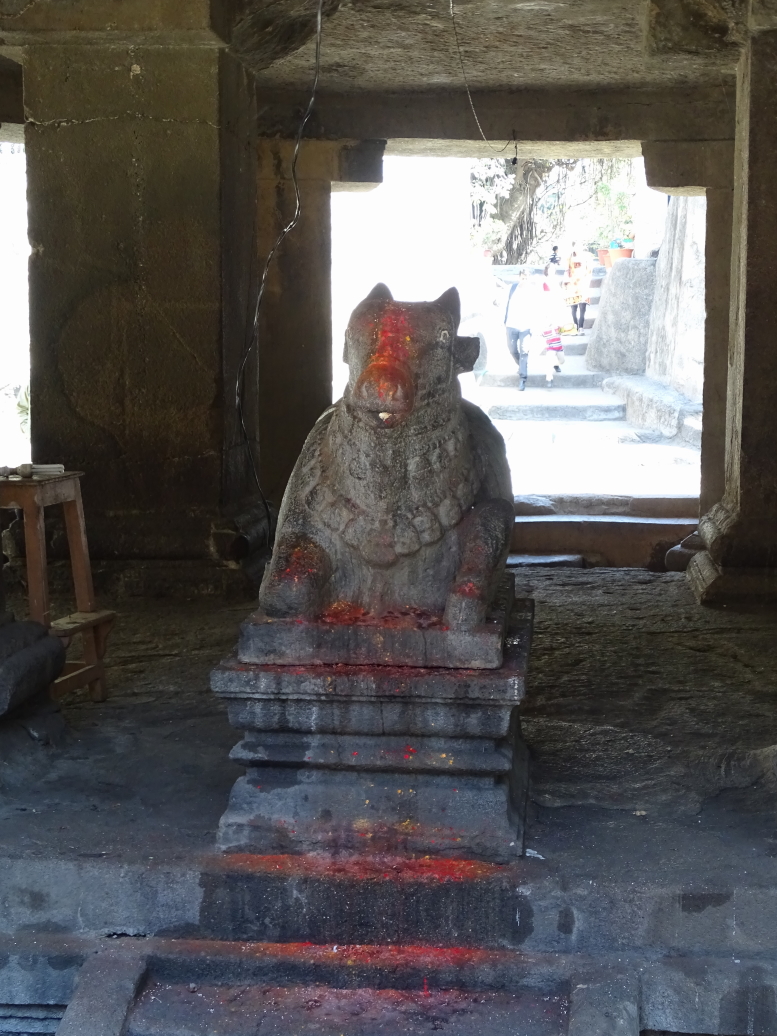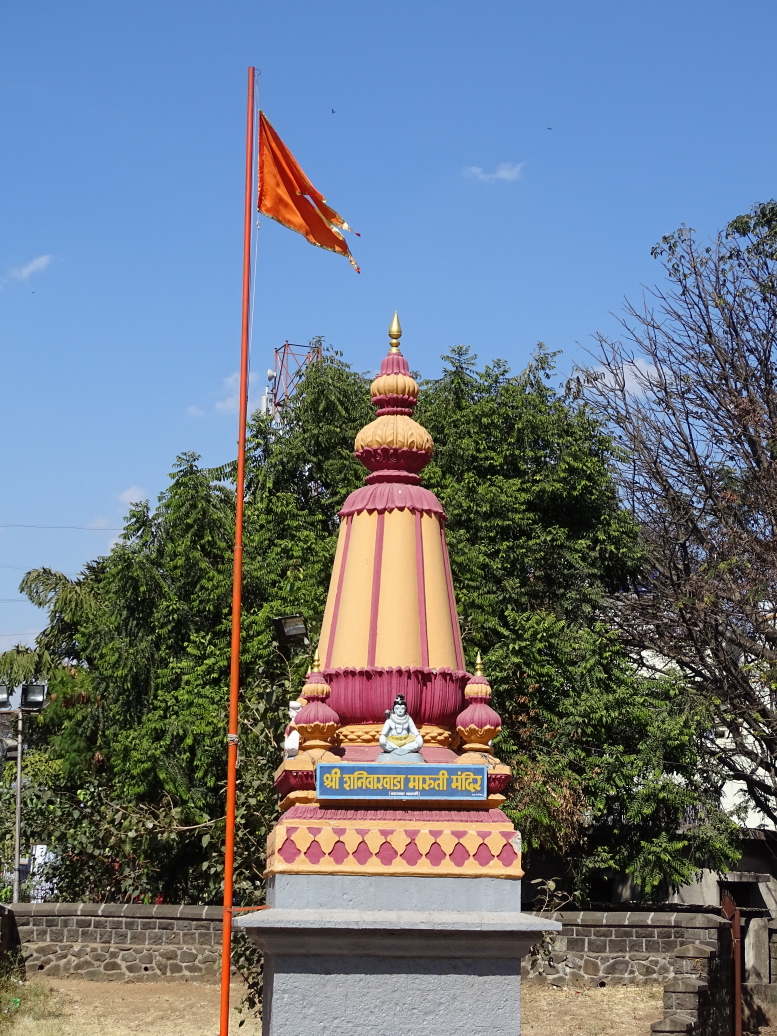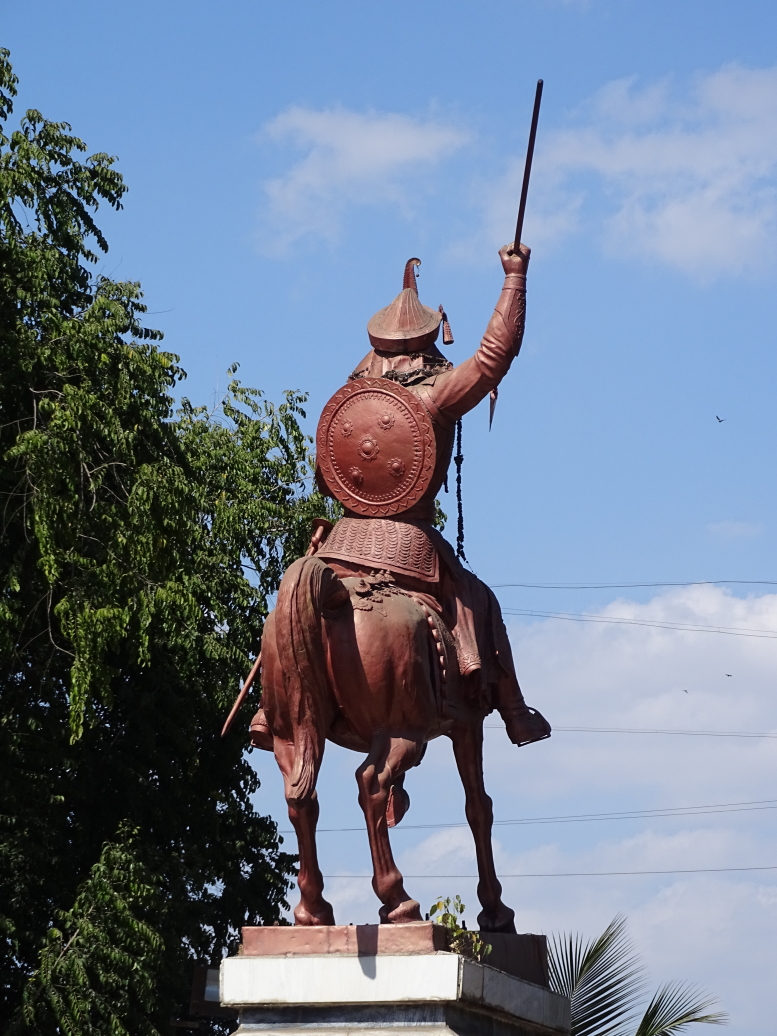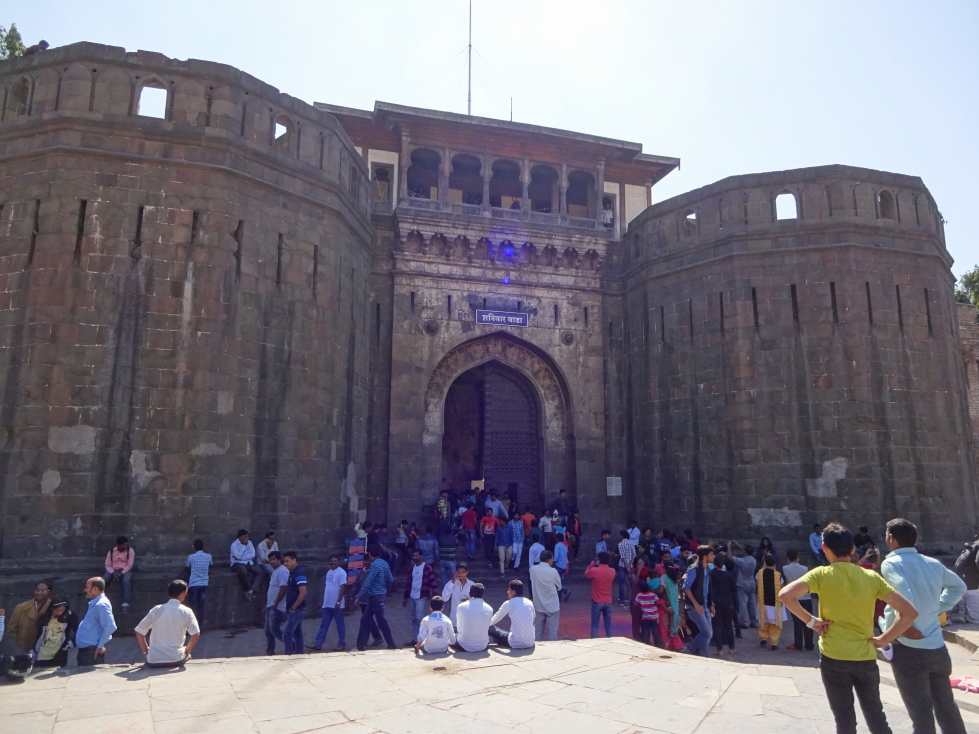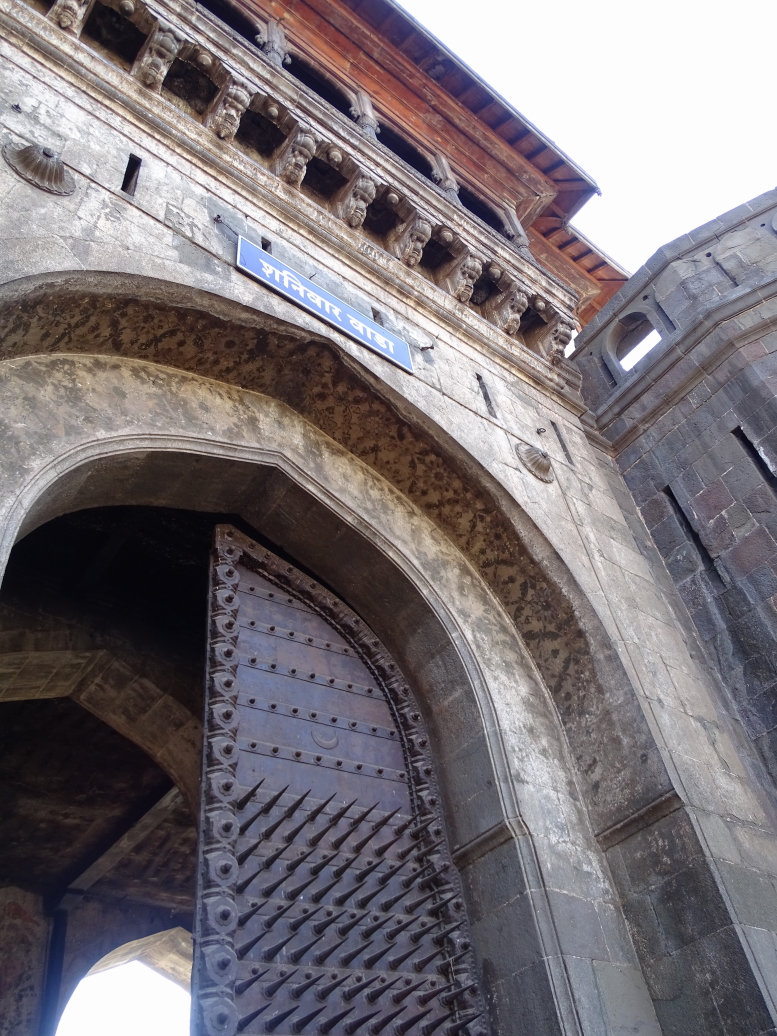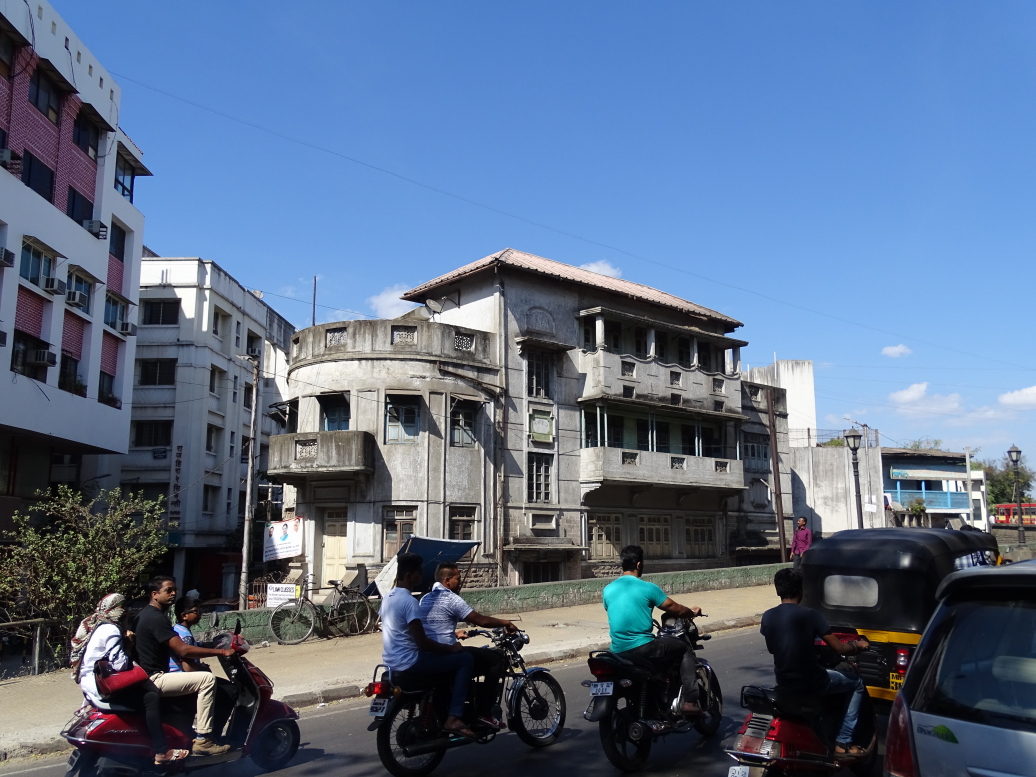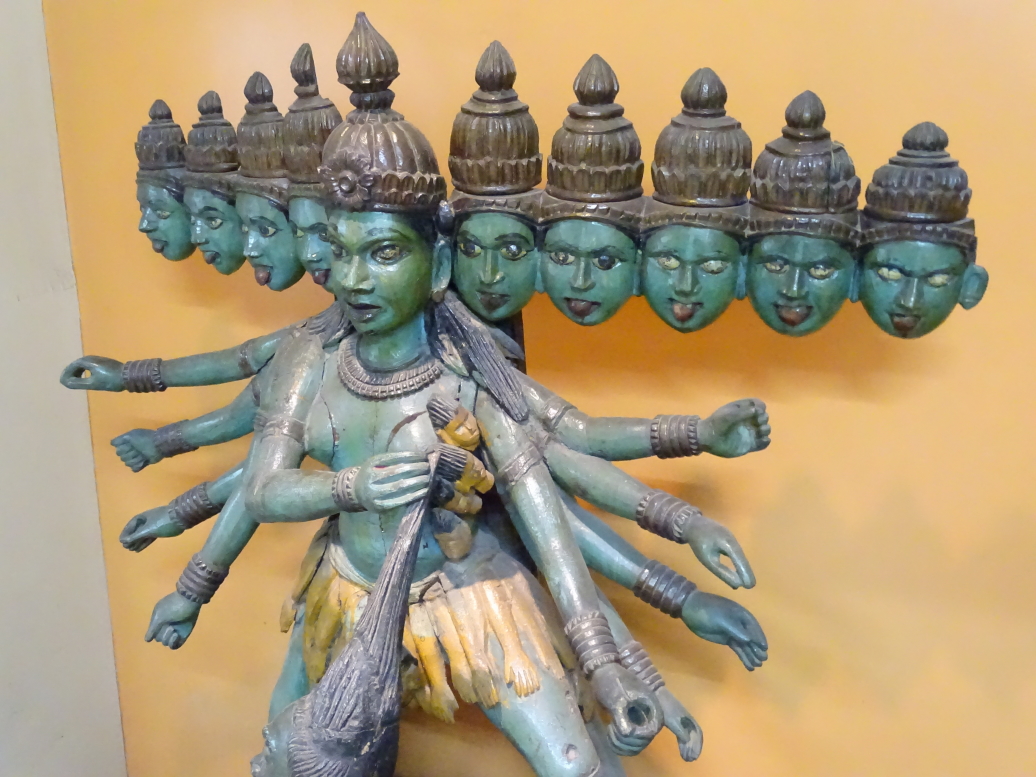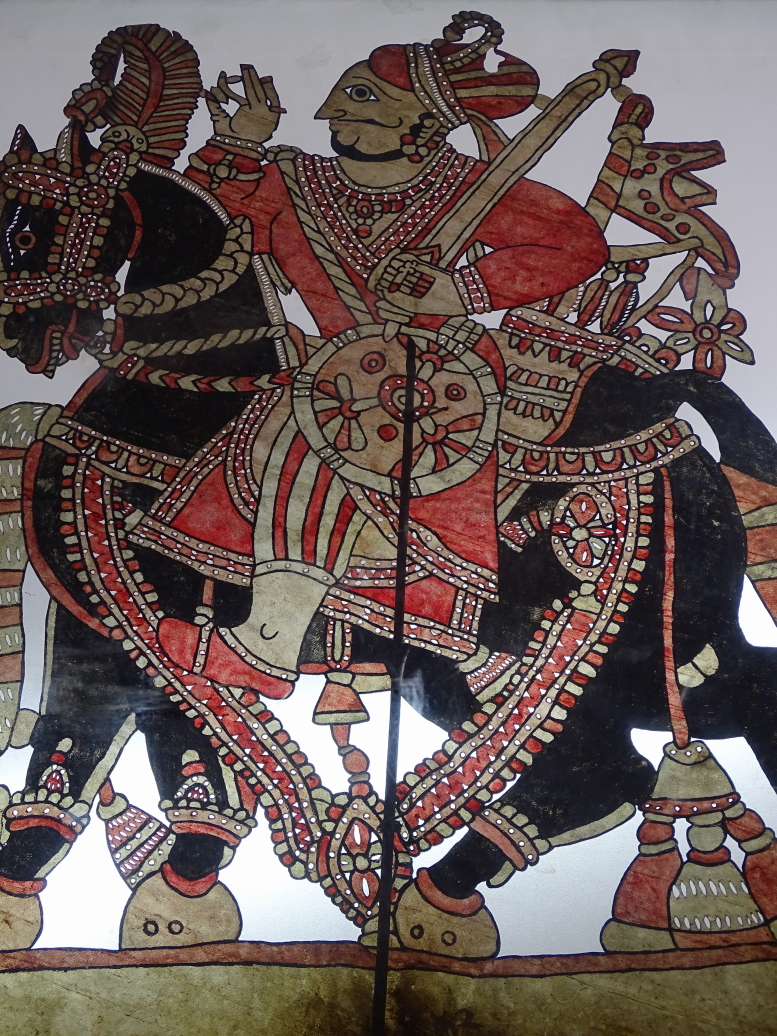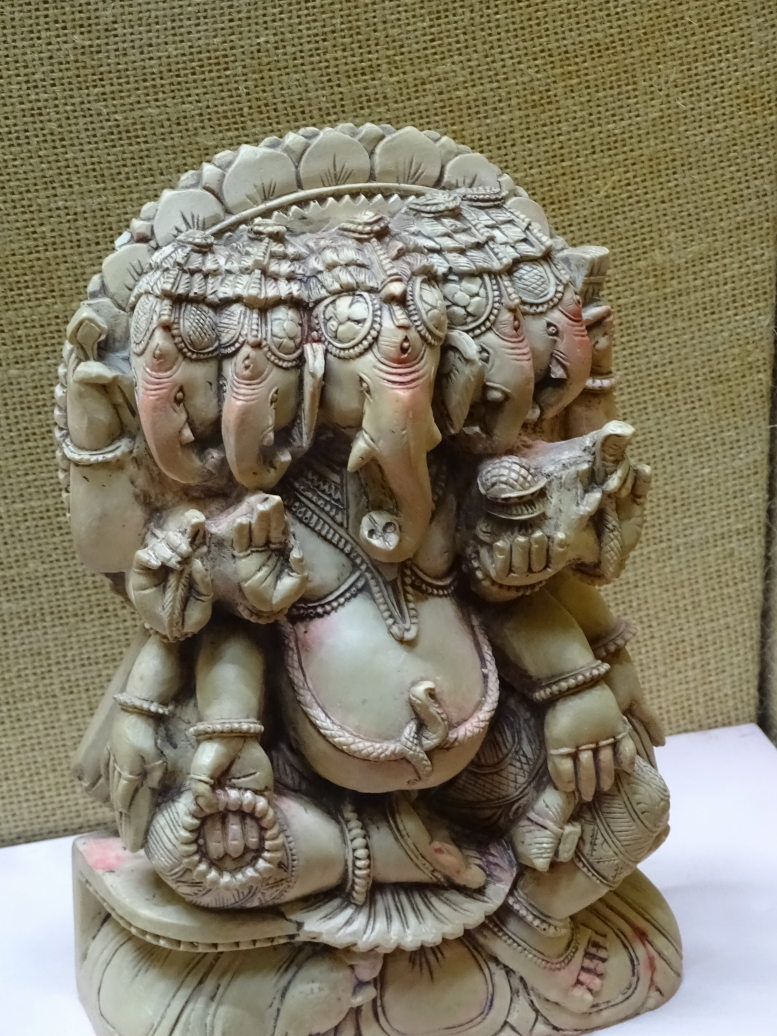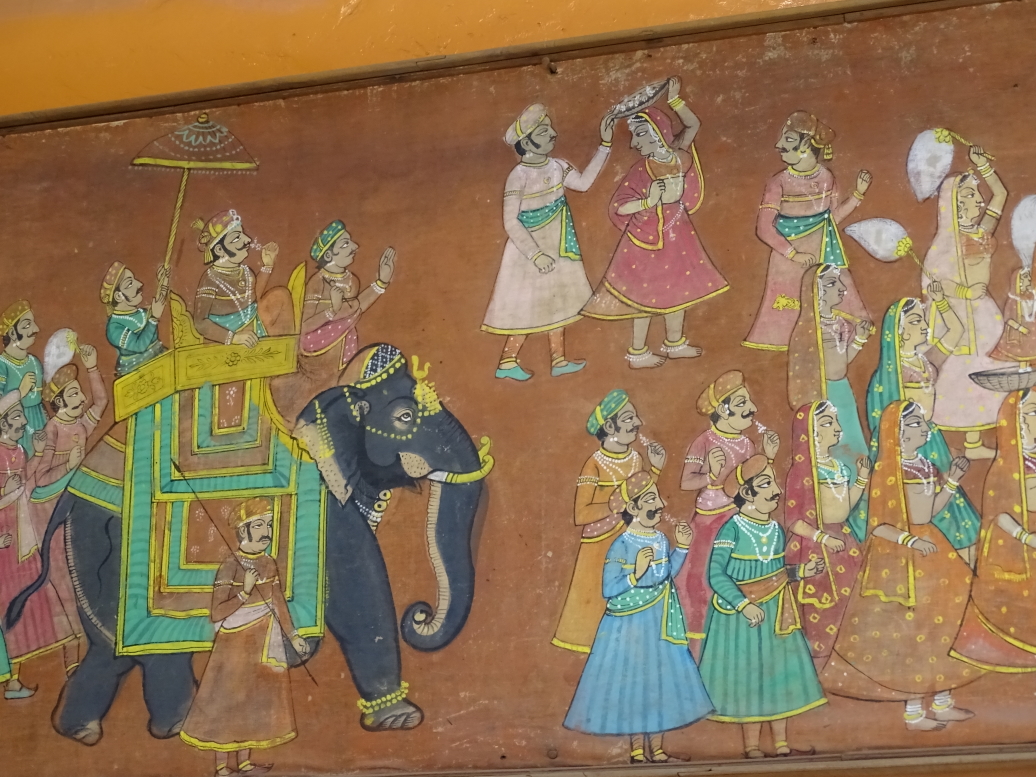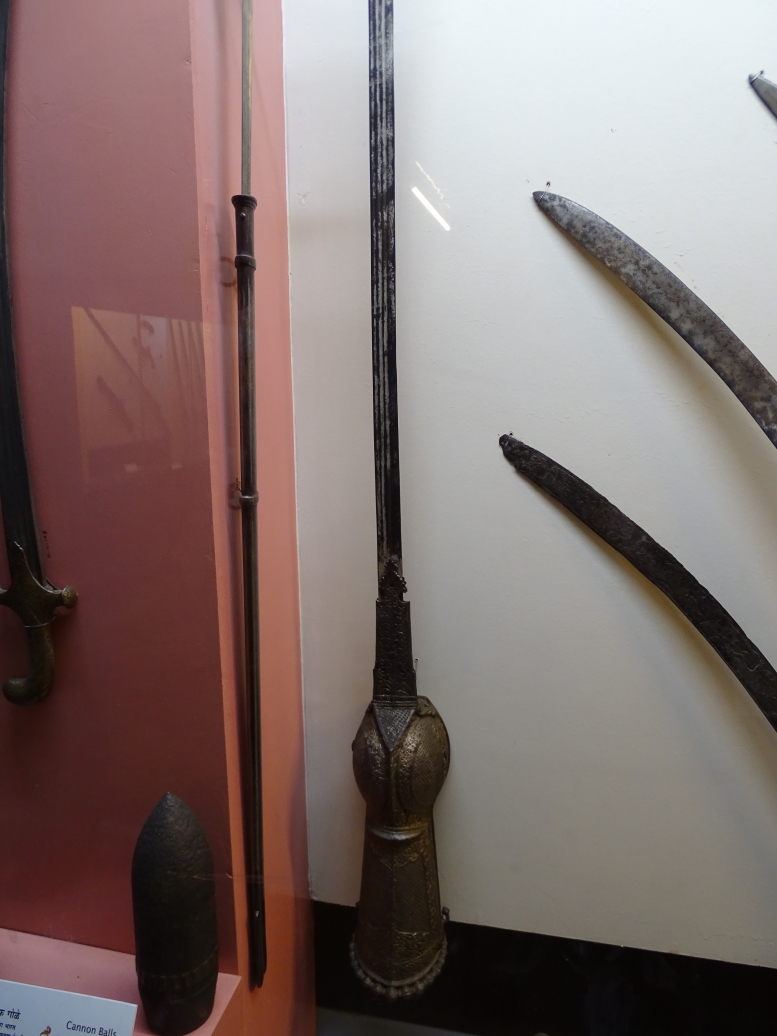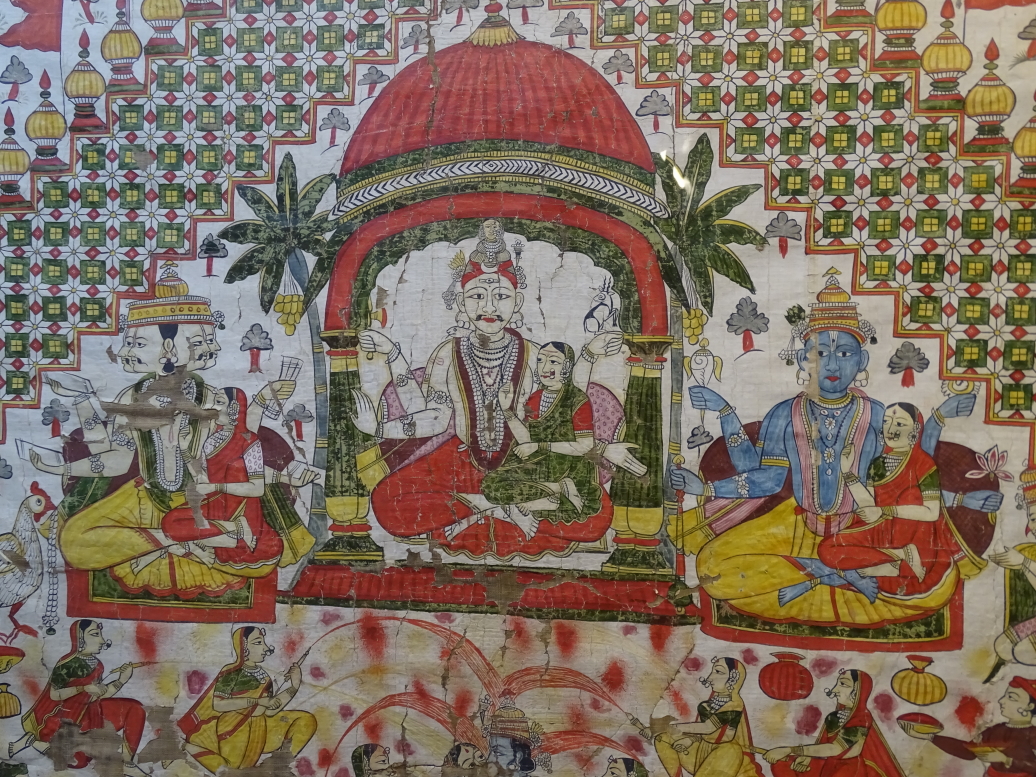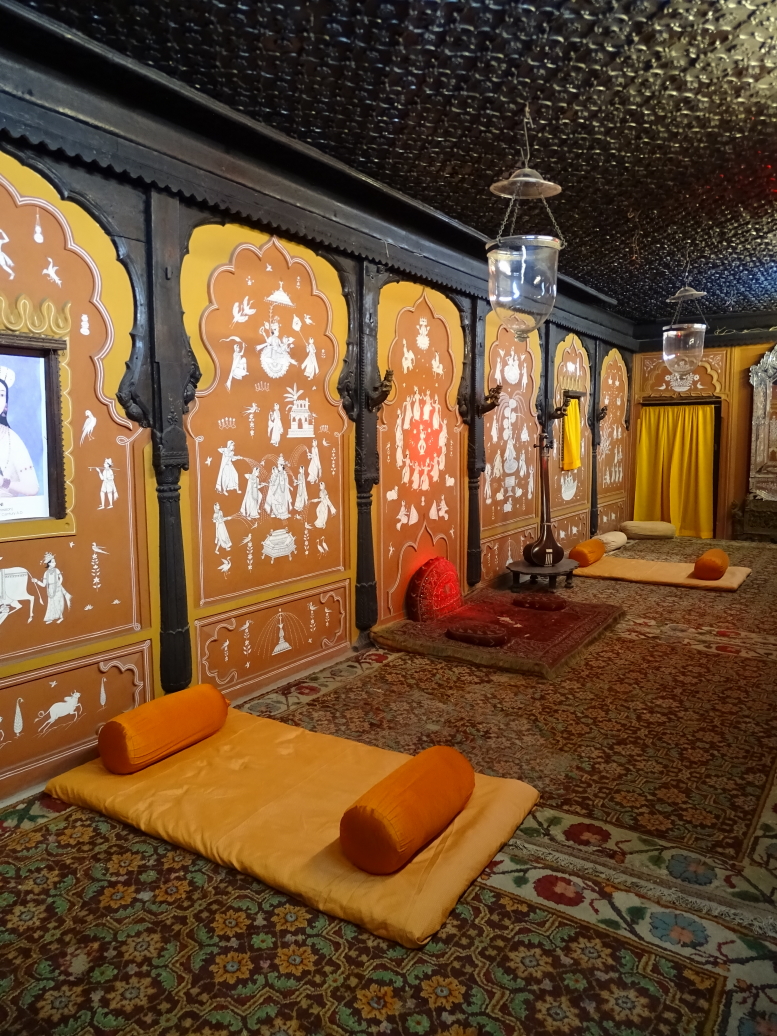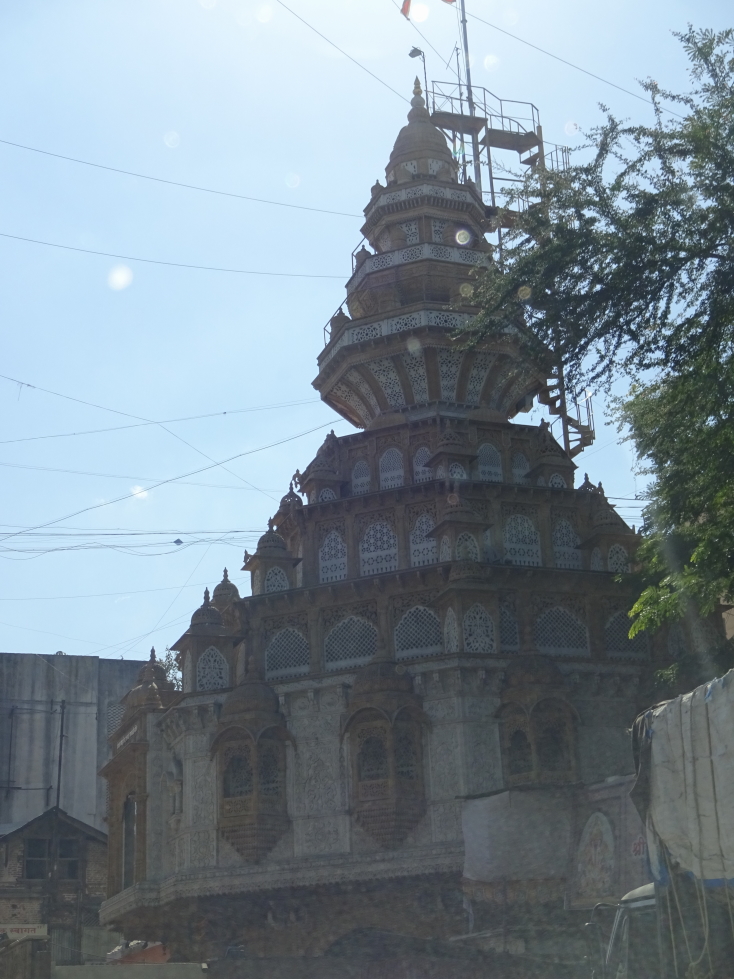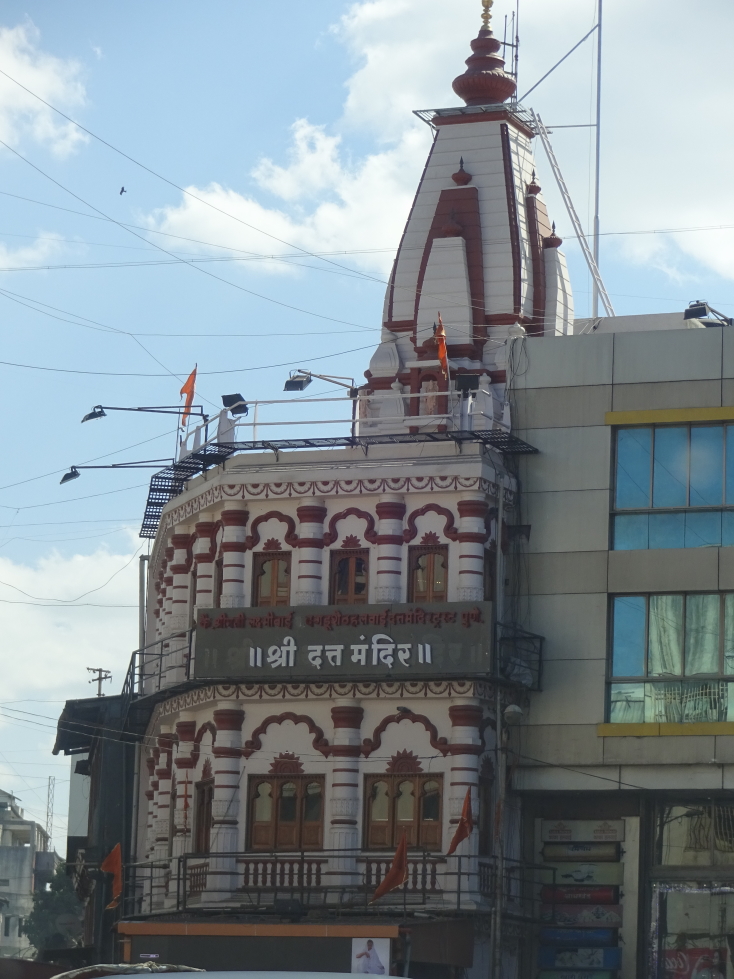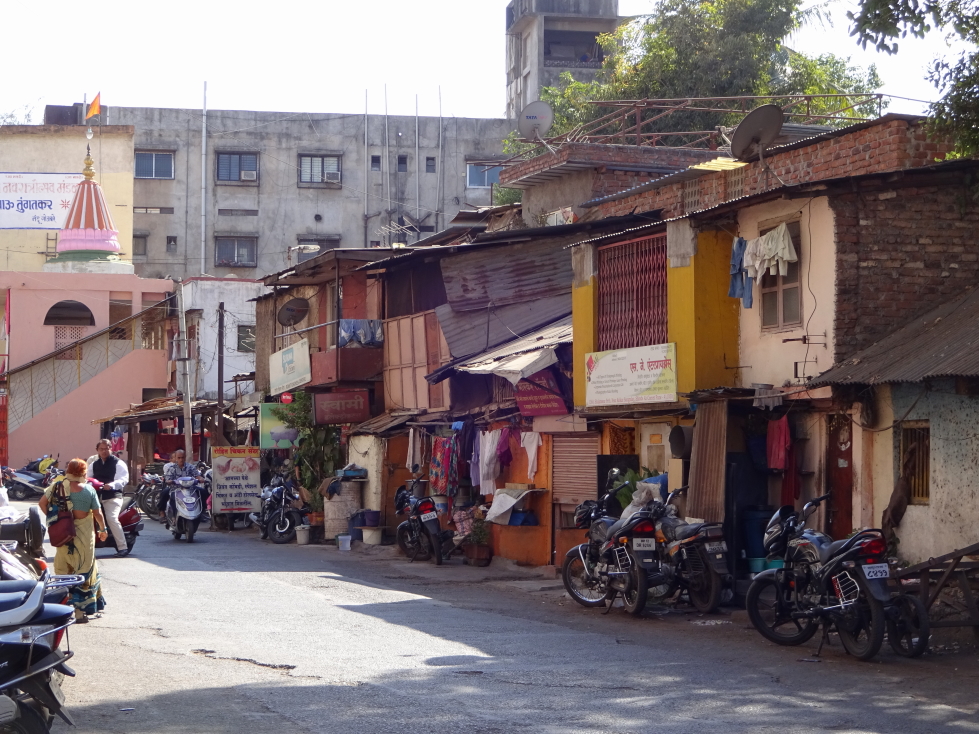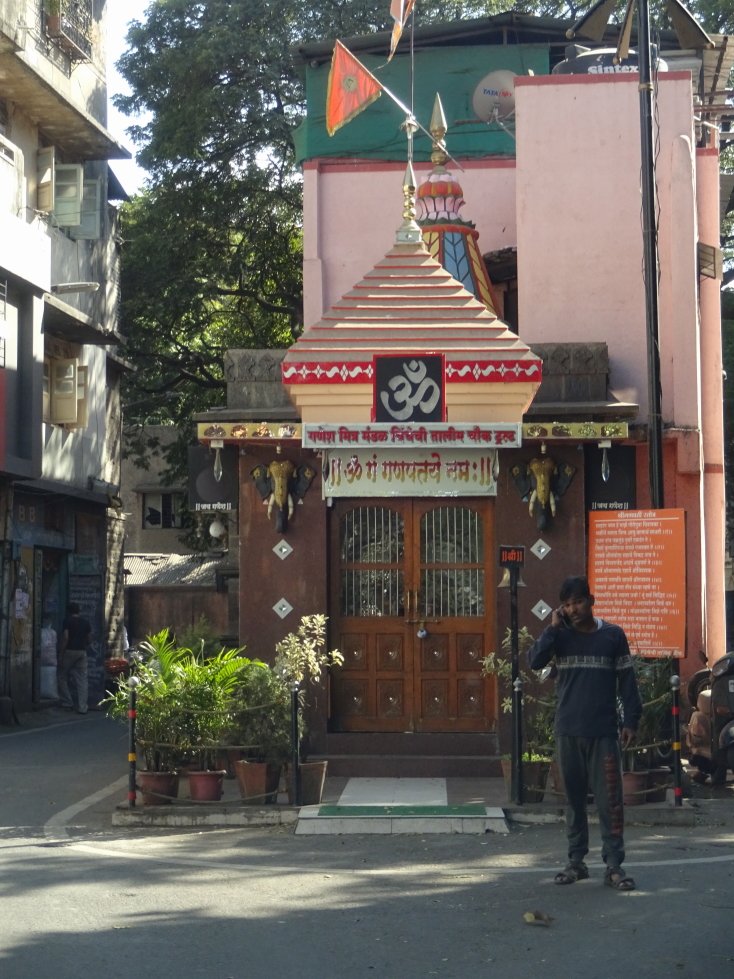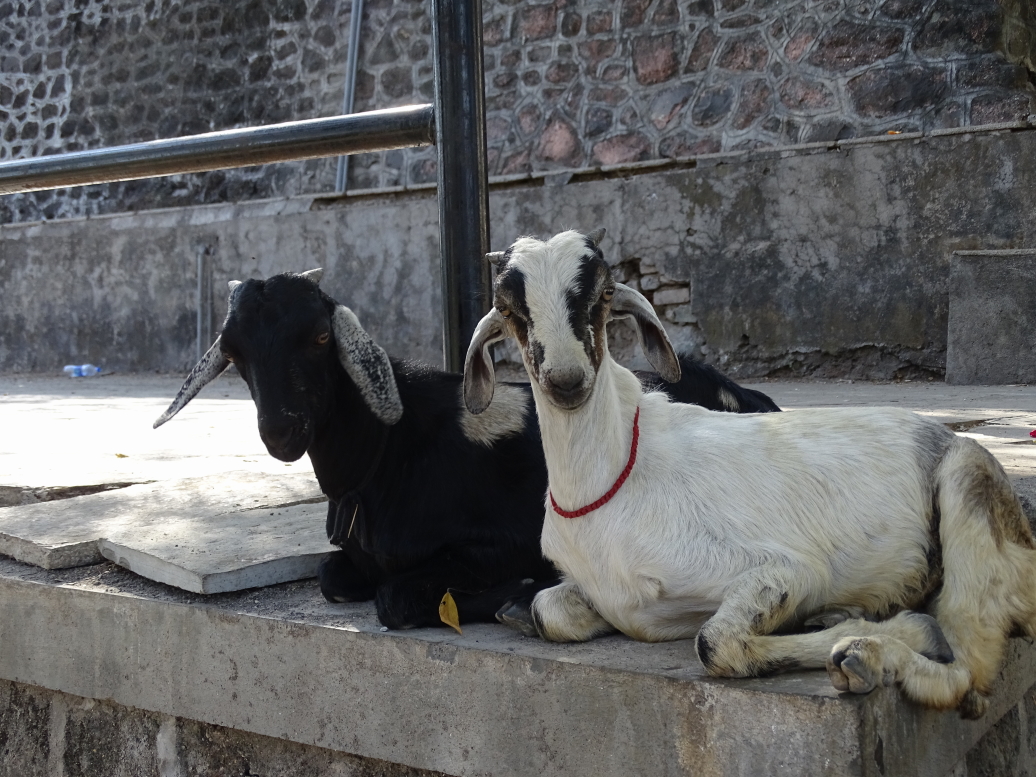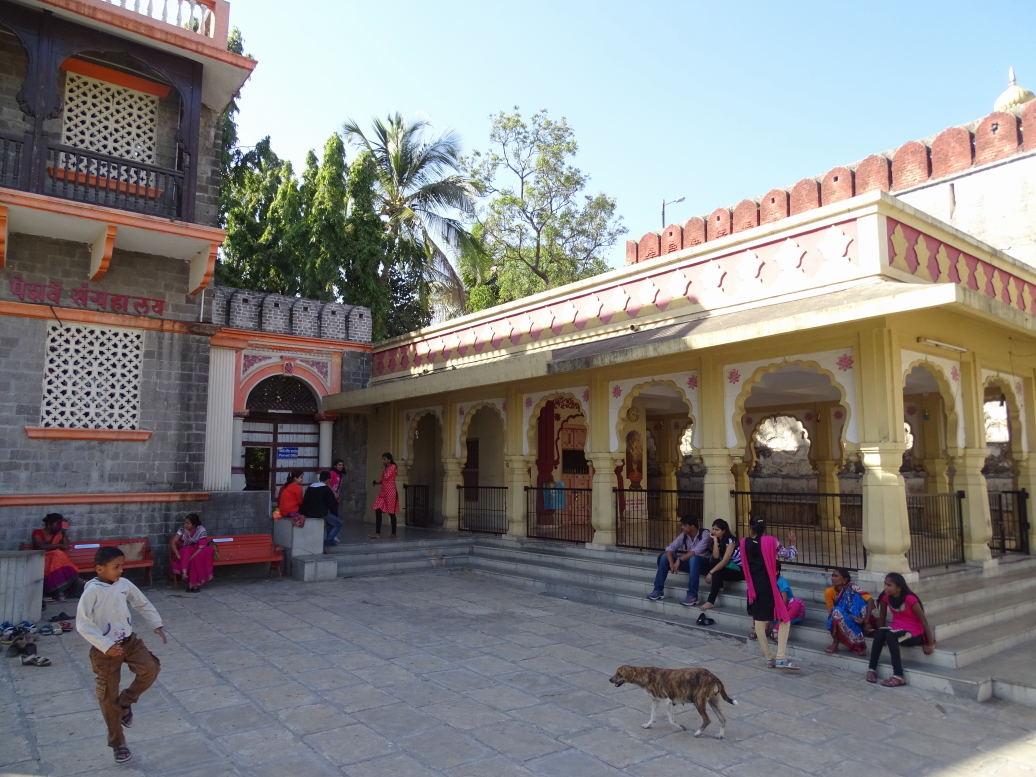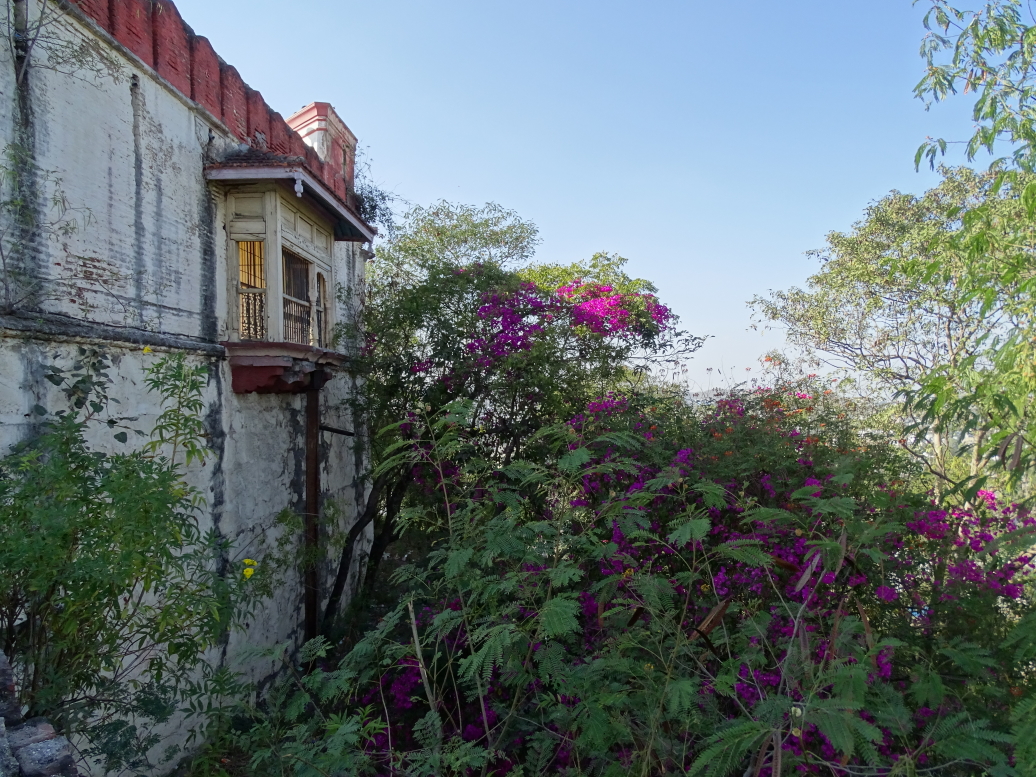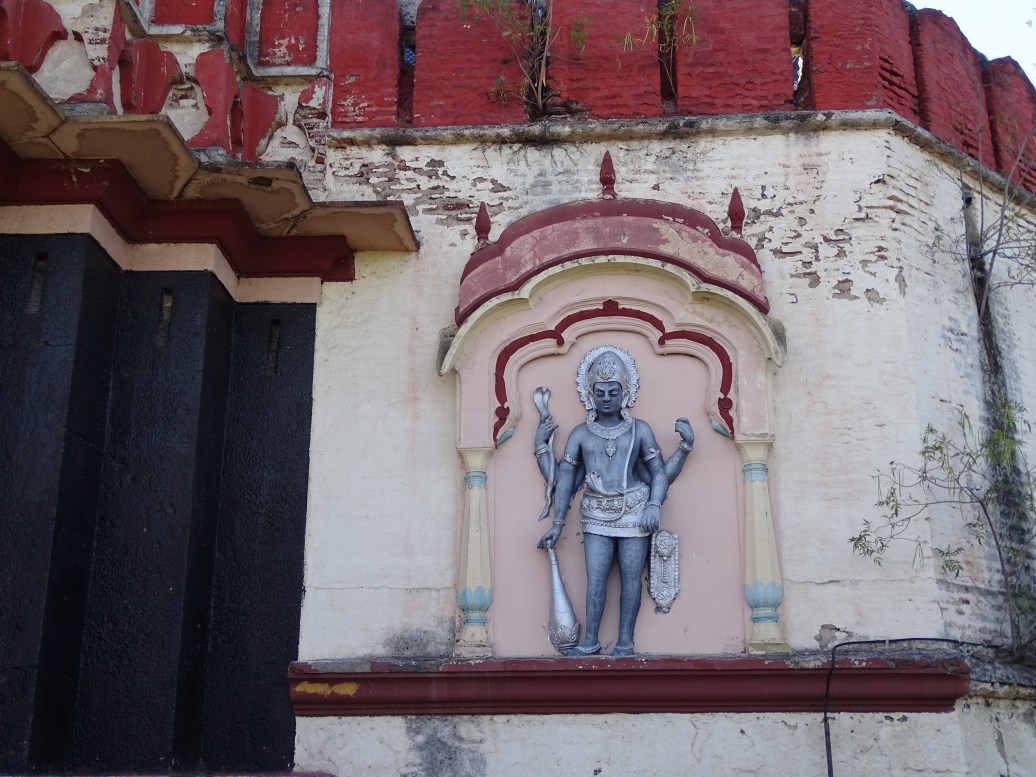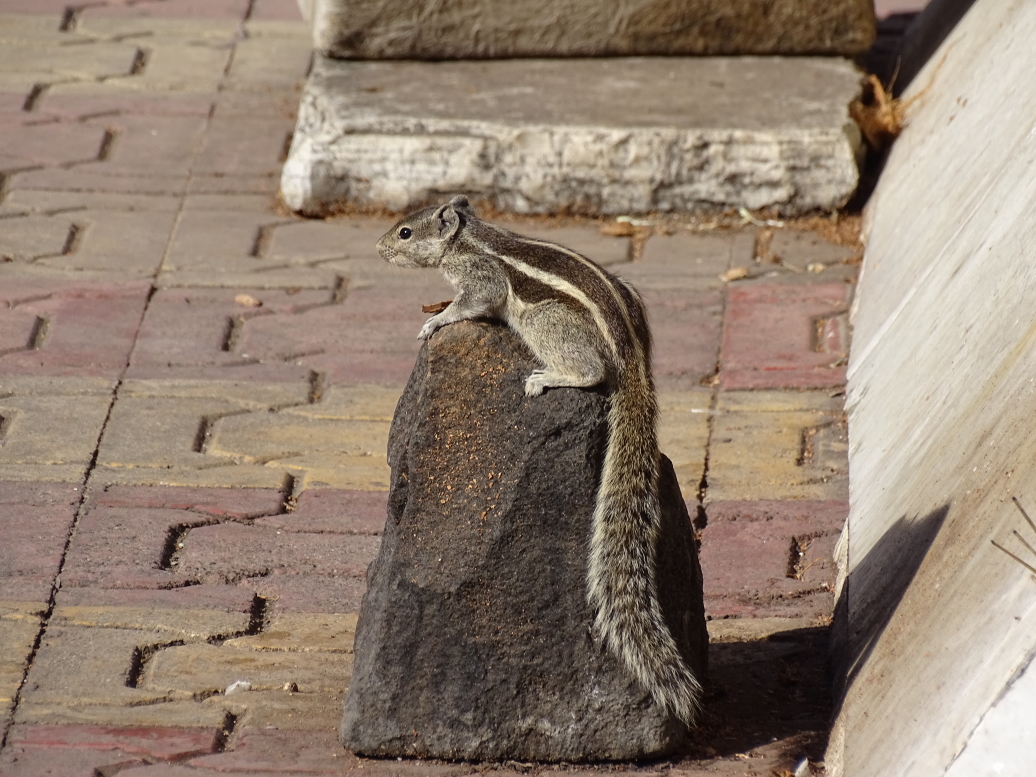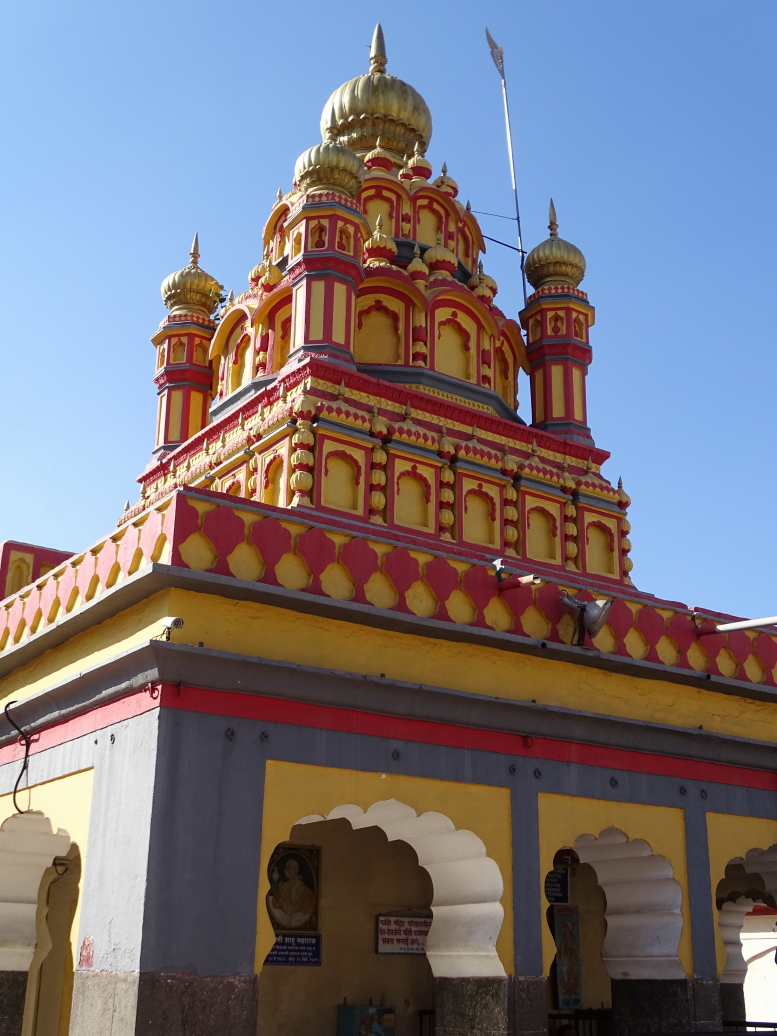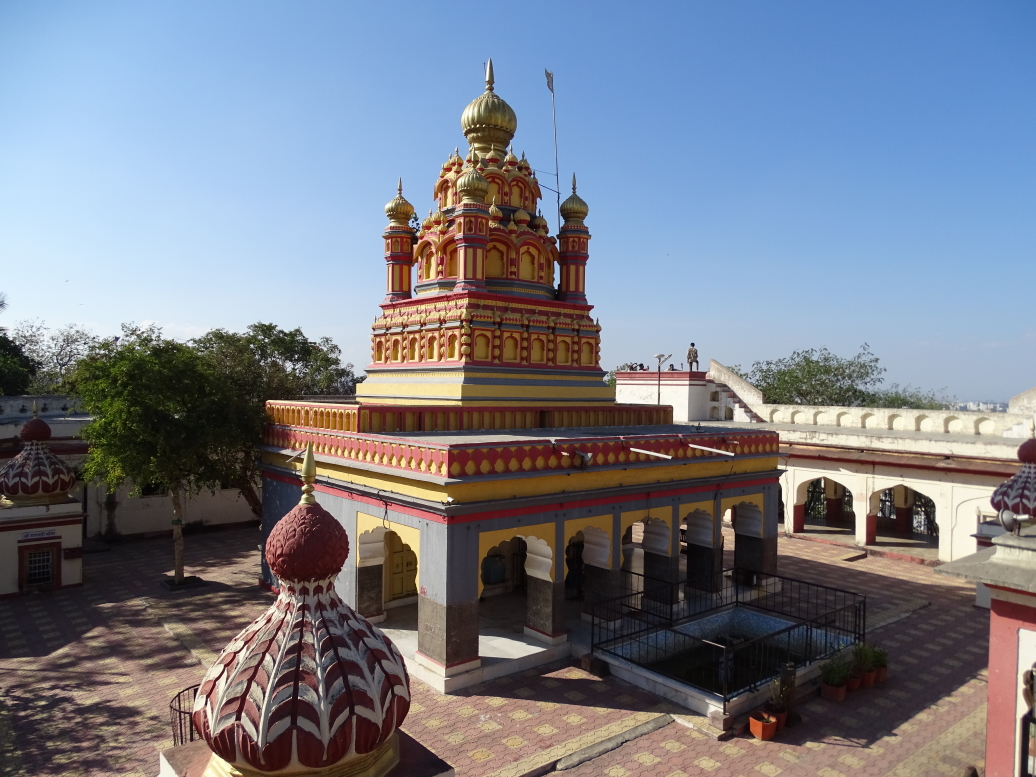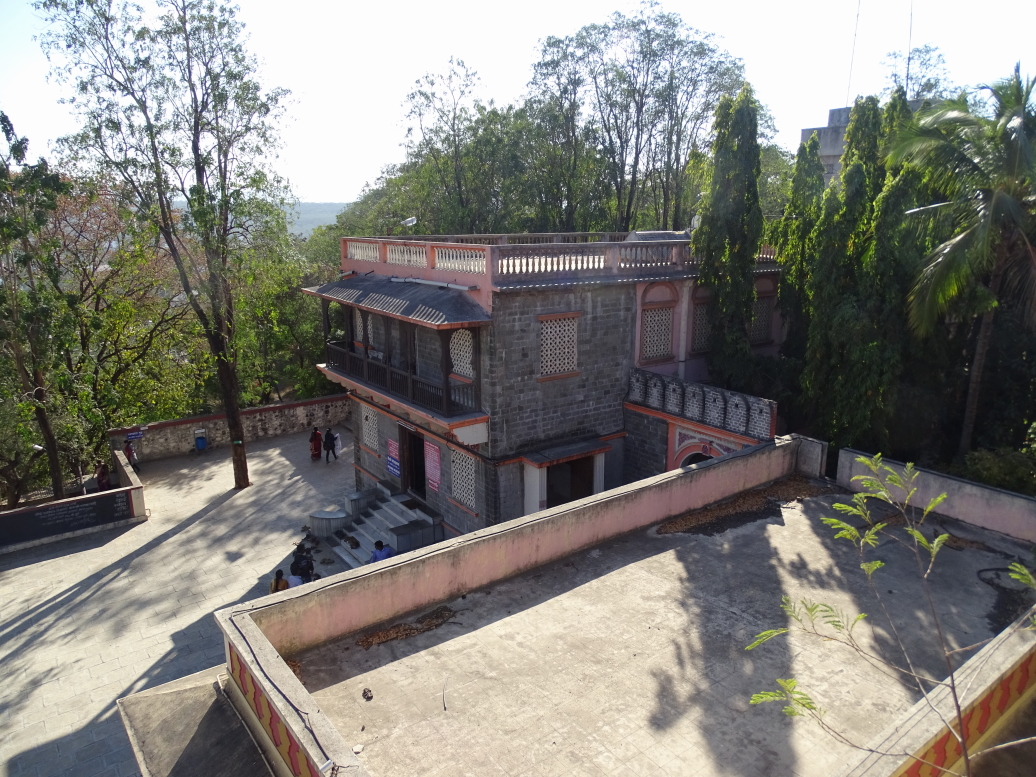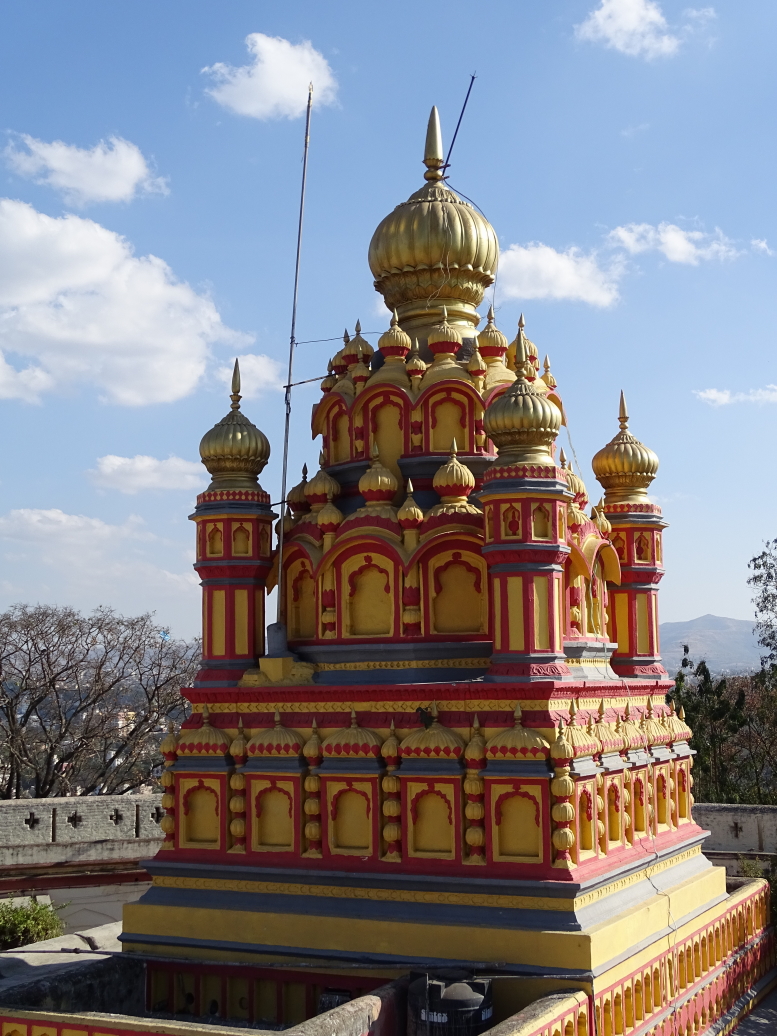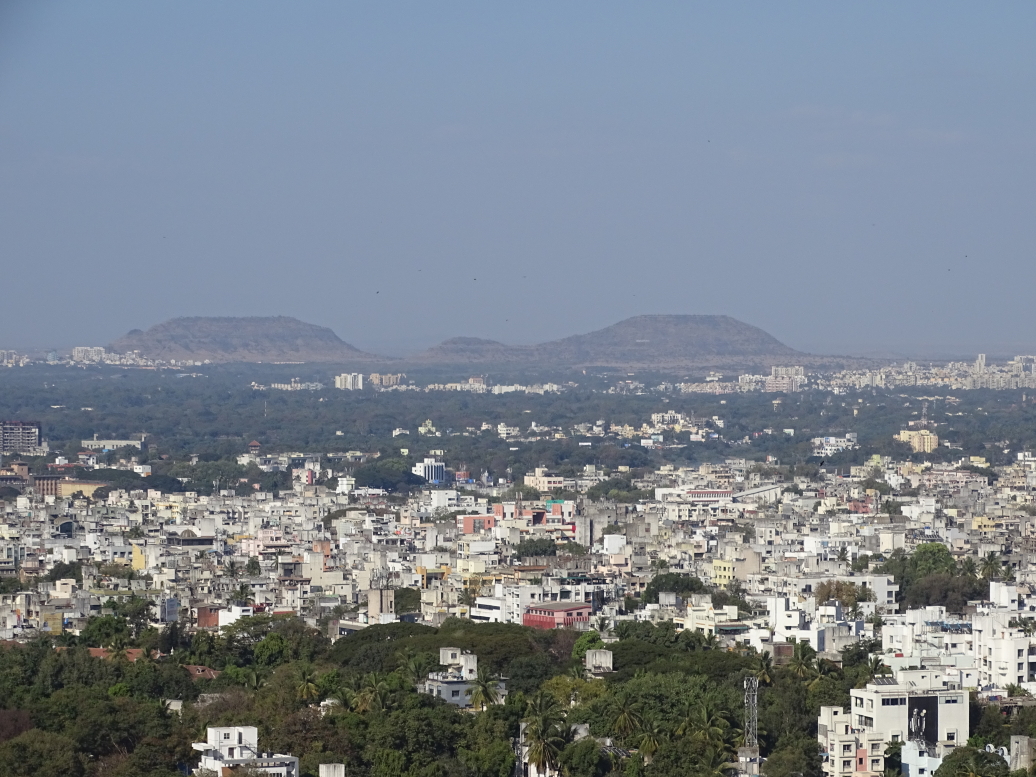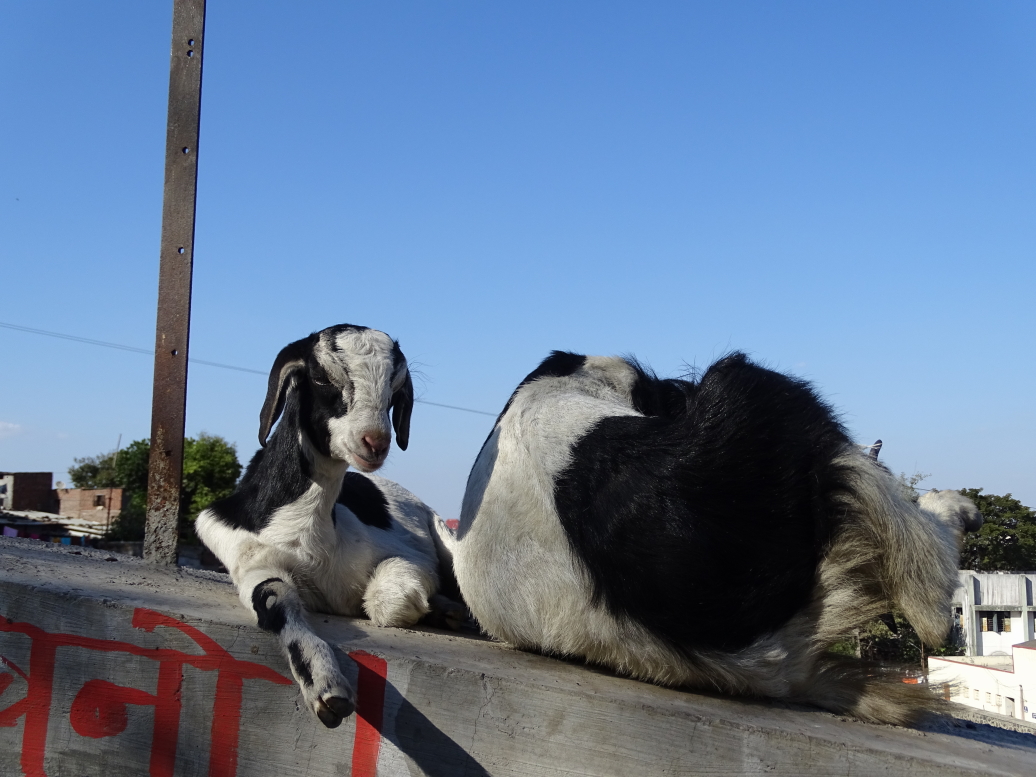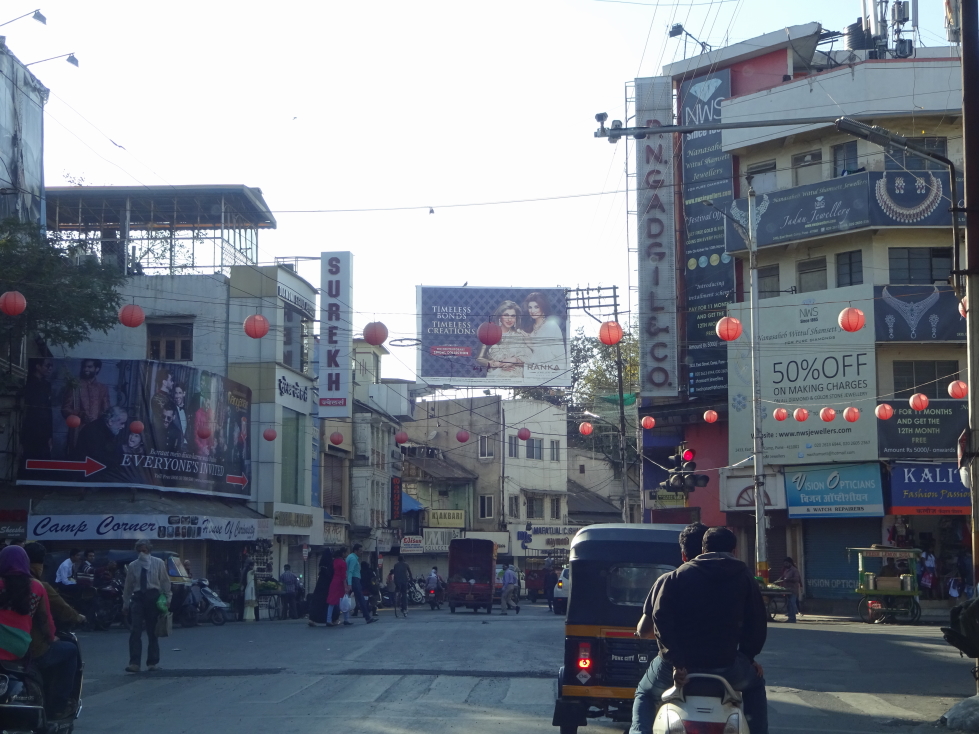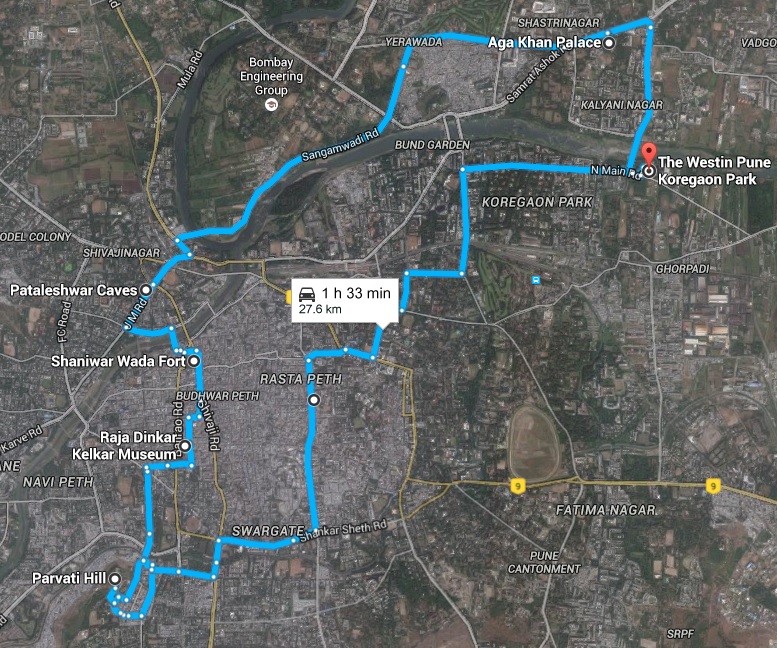Awoke fairly late and got my standard breakfast buffet. I debated heavily whether I should try and see the local sights in Pune or just stay at the hotel and relax, maybe get some work done, and generally recover from a very busy first week at work and the great (but tiring) visit to Mahabaleshwar the day before.
In the end I decided to suck it up and see the sights, I knew I’d regret coming all this way and wasting one of my two weekend days milling about the hotel. I hired a driver for the afternoon from the hotel. He spoke some English, enough that we could communicate well enough. He was forty, so near my age, and was working hard to put his kid through school. To my shame, however, I was unable to catch his name (I tried, I just couldn’t quite get it and attempts to ask him to spell it weren’t understood), so I’ll just refer to him as my driver or the driver. Alas.
We first crossed the Mula Mutha river and visited Aga Khan Palace. Built in 1892, the palace is most famous as the place where Gandhi, his wife Kasturba, and his secretary Desai were interred by the British during the early 40s. Inside the buildings’ first floor rooms are a statue of Gandhi and Kasturba, personal effects, and many descriptive displays about their lives and efforts to fight for the rights of Indians (and eventually independence when it was clear the British were not interested in equality). While a beautiful building and the grounds have amazing plants and flowers, it is a somber place as both Kasturba and Desai died while here. Both of their ashes are found on the ground, in monuments each with a tree growing out the top. Gandhi would later be assassinated (coincidentally by a Hindu nationalist from Pune) and his ashes placed here too, in a similar monument. In the 1960s Aga Khan Palace was given to the people of India by its owner in recognition of its importance to the country’s history.
I had trimmed the list of sights I wanted to visit to three: Aga Khan Palace, Shaniwarwada (an impressive fortification), and Parvati Hill. I really wanted to visit Pataleshwar Cave as well but I thought it too ambitious. Imagine my surprise when the driver stopped and I realized we were there. It is like he read my mind (or, more likely, thought it was a really cool place to see and that I shouldn’t miss it — and he was right in that regard).
Pataleshwar Cave is an 8th century rock-cut temple to Shiva. It was actually carved into the rock but with such precision with beautiful pillars and the like it looks as if it was built by stacking cut stones. It was left unfinished, however, when a pretty serious cleft was found running through the rock. The site consists of two parts, a circular stone roof over a statue of Nandi (Shiva’s bull mount) and, beyond, the entrance to the caves. After taking of our shoes we headed into the cool, dark temple. The middle of the cave consists of a few rooms, the middle one containing an idol to Lord Shiva. Completely surrounding this middle room is a pillared walkway (though as I stated before some of it was left unfinished). As with other temples I had seen a bell hung near the idol. As my driver and I walked around the cave we could here the bell ringing periodically as worshipers came to pay their respects. Outside was an amazing centuries-old banyan tree.
Heading back to the car we drove back over the river and saw an impressive old stone bridge paralleling ours. Now we were in the heart of Pune, the oldest section. Some of the buildings looked old indeed, replete with wooden balconies similar to those seen in the first Assassin’s Creed game. Really nifty.
Shortly we came to Shaniwarwada, an impressive fortification built by the Peshwas (rulers of the Maharashtra Empire) in the 1730s. In front of the very foreboding gatehouse (complete with massive doors festooned with iron spikes) was a temple and a statue. I’d love to have gotten a picture of the statue from the front but the driver was waiting on me and as the place was packed I didn’t tarry. I headed into the fort, paid my 100 INR (as opposed to far less for Indians — but 100 INR is still only less than $2 so a very fair price), and walked around the grounds. As it was so crowded it was a bit harder to appreciate than Aga Khan but it was neat nonetheless. While the walls and the gates were intact (including some interesting wooden balconies and arches) the middle of the fort had been reduced (by fire in 1828) to its foundations. There were also fountains (not turned on, however) and nice stands of trees.
Exiting the fort I met up with the driver and we headed to another destination. Like Pataleshwar, this one was not on my list. Though Ravindra had highly recommended it the day before I feared a visit to the Kelkar Museum would take too much time. Again, I was very fortunate that my driver took me here. An amazing collection of Indian artifacts, mostly from the 17th through 19th centuries. Idols, puppets, combs, furniture, instruments, armor, weapons, lamps — you name it, it’s there. My driver went through the museum with me and we admired the vast collection, him reading some of the Hindi labels.
Leaving the museum he stated it was 3p (we started at noon) and he was getting tired and should skip Parvati Hill. We started back to the hotel but I really wanted to see Parvati Hill and asked if we could still go and that I was OK doing the 103 steps to the top by myself if he was too tired to do so. On the way to the bottom of the hill we passed an impressive temple to Ganesh but I was unable to snap a photo quickly enough. We also passed some interesting architecture and a small shrine to Ganesh with the Ohm mantra above the entryway.
Arriving at Parvati Hill (and somehow squeezing the fairly large hotel car into a tight parallel parking spot) I could see why he wasn’t relishing doing the climb up Parvati Hill. It isn’t 103 traditional steps, but rather a step then about 15 to 20 feet of a 15% slope then another step. Not cool, not cool at all! He insisted on going with me still, however, and took off his hotel-mandated driver’s coat and grabbed some bottles of water for us. It was a pretty strenuous climb up, however it was made pleasant by increasingly beautiful views of Pune and the surrounding hills and the presence of goats and wild dogs along the path made it very entertaining.
After several stops to get our breath, drink some water, and chat a bit (mostly about how it isn’t *really* 103 steps) we reached the top. Atop this hill (second highest in Pune) sit several temples, including the one we were visiting to Shiva and Parvati. Next to the temple was a museum displaying many items from the Peshwa period (1700s) like coins, everyday objects, etc. There was a really neat map that I was able to discern the different colored regions due to my knowledge of history and maps — the British state at Bombay, the Portuguese at Goa, the Maharashtra. A bystander commented how rare it was that someone understand his language, much less read it. I came clean about that, however! Also saw some chipmunks scurrying about in the courtyard outside.
Back outside my driver spoke about Shivaji. Luckily as Anshul had talked about him on Saturday I was able to have a conversation about him — that was a neat moment and I think the driver appreciated it. Next we proceeded into the temple’s courtyard (after taking off our shoes, of course) and climbed up the walls that define the courtyard to enjoy the view not only of the temple but of Pune and its environs. I nearly banged my head on the low-hanging arch and was very careful not to fall the 10+ feet to the courtyard below (no railings here, folks!) — particularly dicey with small bits of iron studding the walkway.
We headed back down the 103 steps to the car, heading back toward the hotel. He pointed out Laxmi Road, the prime shopping street of Pune, and we stopped at a shop. He told me to hold off on buying anything but I saw something Michelle would like and went for it. I didn’t try to bargain (and was told by Anshul the next day that shops like that generally don’t) and I think the driver was a little exasperated that I ended up buying something haha. Made it back to the hotel at 5p. I gave him a nice tip — he had, after all, spent five hours with me and went to most of the sights. And no, I didn’t expense the tip or the cost to hire the driver — that’s on me.
Later that evening I ate the buffet at Seasonal Tastes and headed to bed, knowing that the week ahead would be filled with work and three presentations (I was thinking on Tuesday, Wednesday, and Thursday).
